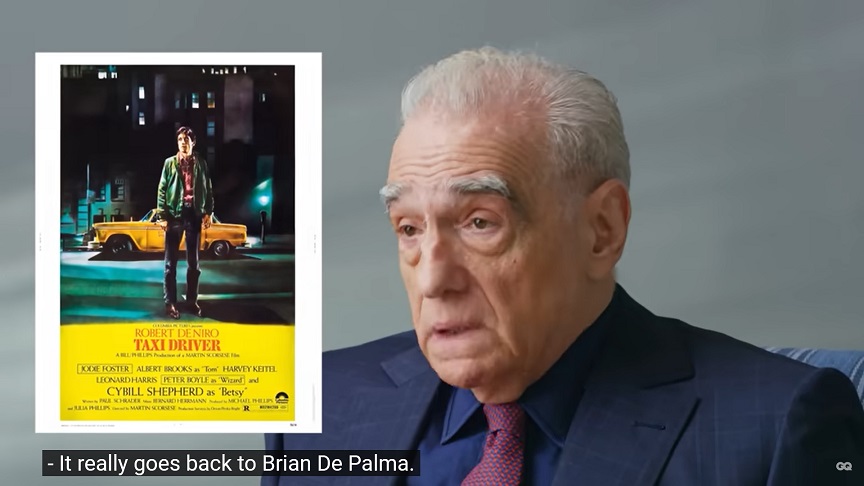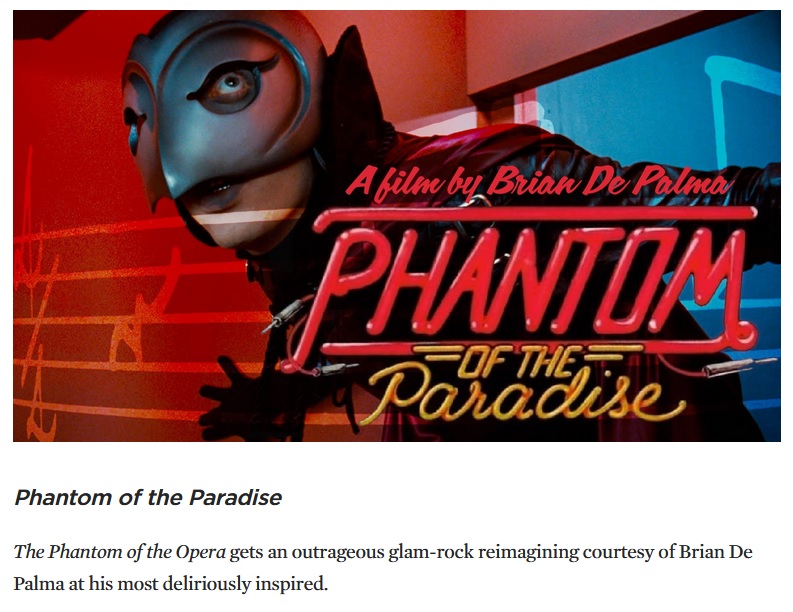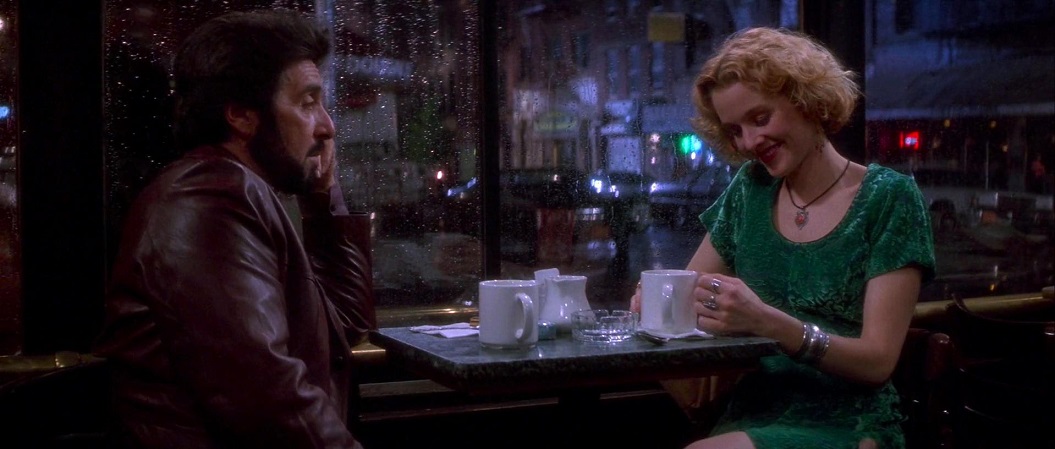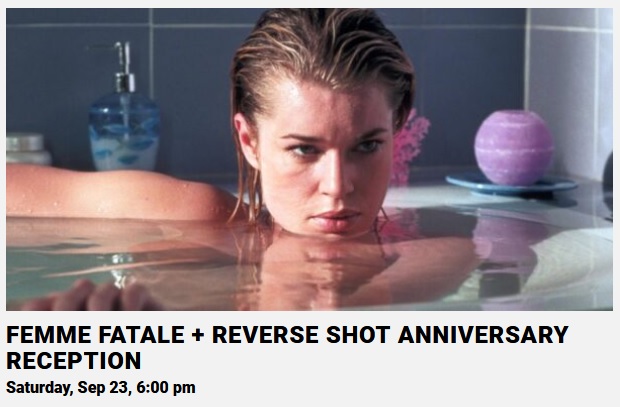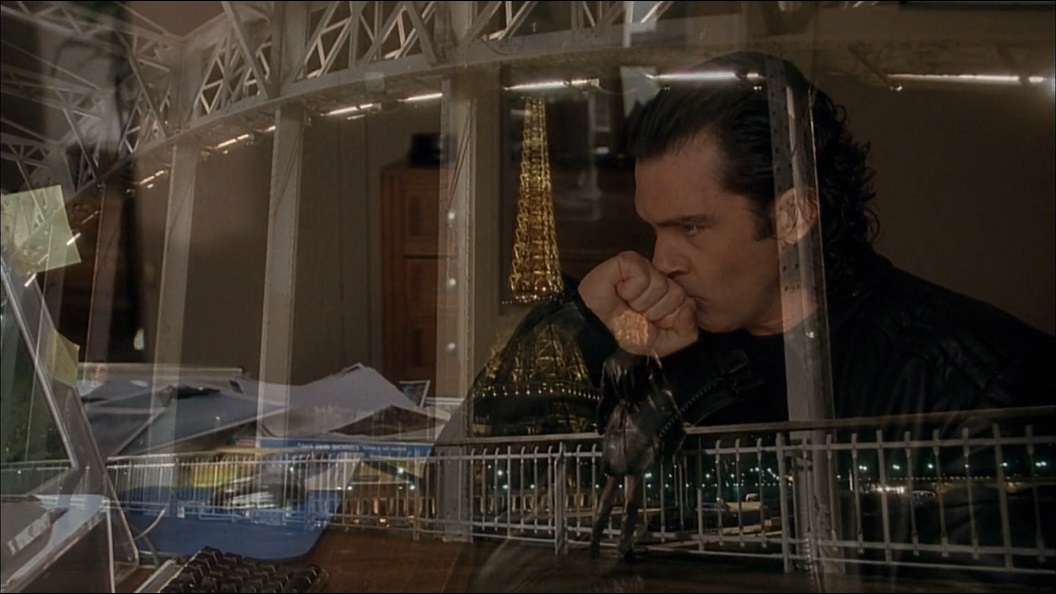'ORIGIN OF EVIL' REVIEWS MENTION DE PALMA, CHABROL
DIRECTOR SEBASTIEN MARNIER: "I DON'T DESERVE THAT - HE'S ONE OF MY FAVORITE FILMMAKERS"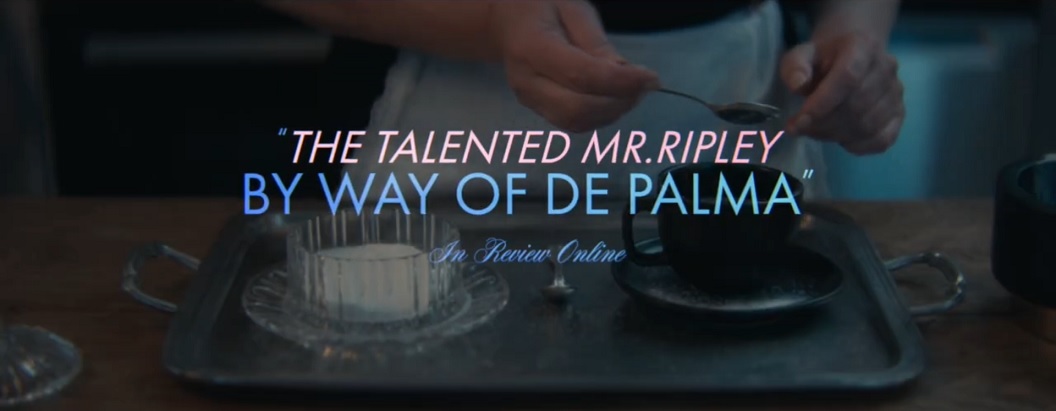
"
Succession meets
Brian De Palma in this delicious family-fortune thriller from France, directed by
Sébastien Marnier." So reads the subheading of
Beatrice Loayza's positive review of
The Origin Of Evil in
The New York Times.
The Independent's Lindsey Bahr interviewed Marnier for a profile piece:
Like many French filmmakers before him, Sébastien Marnier fell in love with cinema through Hollywood movies. Thrillers like “Basic Instinct,” “Fatal Attraction” and “Single White Female” made a big impact on him as a teenager. They were exciting, usually featured strong and dangerous women at the heart of them and, of course, they were sexy, which at 14 or 15 was a “really big deal,” he laughed in a recent interview. “American cinema is really the foundation of my cinephilia,” Marnier said through a translator. “What I like to look for is finding that feeling that American film gave me when I was a teenager, but making a truly French film with those feelings. So how do I take the inspiration that I felt as a teenager from those emotions to make a truly French film that is taking place on the French territory?”
With “The Origin of Evil” he wanted to pay homage to those films and put them within a distinctly French context. Influences range from Claude Chabrol to “Parasite.” A playful mixture of genres, it’s scary at times, but also funny, offbeat and, yes, sexy, as Stéphane, who is in a romantic relationship with a volatile imprisoned woman, navigates the personalities in her father Serge’s (Jacques Weber) orbit: His spendy wife Louise (Dominique Blanc), his daughter George (Doria Tillier) who is angling to push him out of the business, a jaded granddaughter (Céleste Brunnquell) and their unfriendly maid (Véronique Ruggia).
Though the origin of this story comes from a very personal place — Marnier's mother, who made contact with her father later in life — he hopes it has broader commentary on issues affecting modern France.
“I think ‘The Origin of Evil’ talks about the end of a certain French society, the end of a powerful patriarchy, the end of a super-rich right wing dominant class, especially in the Riviera, a very rich class that was anti-Semitic and extremely powerful,” said Marnier. “And it’s in this confrontation of two worlds that we find a tension that France, is really experiencing at the moment. There’s something very French, I think, in the way the film captures the class struggle.”
It’s also a film where no one is quite what they seem, and it keeps you guessing and second guessing until the very end. Instrumental in this was the casting of Calamy.
“She has something that’s quite rare in French cinema, which is that she’s very beautiful and sexy, but on the other hand, she’s also banal in the good sense of the word. She’s really the woman next door,” Marnier said. “And because of things like ‘Call My Agent!,’ we like her. We have an empathy for her.
"If I had cast Isabelle Huppert, we would know right away that she was going to kill everybody,” he added.
Stéphane, it should be said, does not “kill everybody,” but she has her dark secrets too.
Of that De Palma comparison, Marnier deflects. It is, he said, much too much. “I don’t deserve that,” he said. “He’s one of my favorite filmmakers.”
He’s mostly just excited that after a few films, he’s finally got one that’s playing in American cinemas too.
“It’s really moving and beautiful,” he said. “My other films were released on platforms in the U.S., but to be released theatrically is a great gift.”
Here are some more review clips:
Craig D. Lindsey, Nashville Scene:
The Origin of Evil is practically two hours of Sébastien Marnier declaring that Brian De Palma is one of his favorite filmmakers. The French director works many of the psychological-thriller legend’s tricks into his psychological thriller: overhead shots, slow dissolves, split-screen sequences. Hell, the movie even begins with the camera lecherously roving around a women’s locker room, much like the salacious opening sequence from De Palma’s Carrie, set in a girls’ locker room.
Like in most De Palma thrillers, we also have a mysterious female protagonist. Stéphane (Laure Calamy) is a fish-plant worker who gets reacquainted with her wealthy father (Jacques Weber), whom she didn’t grow up with. Of course, when she visits the old man at his swanky (and cluttered) Mediterranean mansion, she’s greeted by a family who’s just as off-putting as she is. The business-minded daughter (Doria Tillier, gloriously icy) wants Stéphane gone the minute she meets her, while the chain-smoking matriarch (a vainglorious Dominique Blanc) is too busy being a compulsive shopaholic to incite much animosity. The business-minded daughter’s daughter (Céleste Brunnquell) is mostly around taking pictures, hoping to escape this poisoned clan she’s unfortunately bound to by blood.
With the old man ailing after a stroke and the fam ready to carry on his business without him, Stéphane — who’s ready to do anything for her daddy — has come along at the right time. Of course, we learn in the second hour that Stéphane, who has a girlfriend (Xavier Dolan regular Suzanne Clément) in prison, has some hidden motives of her own.
Evil is basically a tribute to eat-the-rich thrillers made by French filmmakers. (De Palma, who has famously divided his time between New York and Paris, is considered an honorary Frenchman.) Along with De Palma, you also get whiffs of Claude Chabrol and René Clément, two Frenchmen who have done adaptations of Patricia Highsmith’s The Talented Mr. Ripley — which should tell you exactly what you’ll get with this flick. Fans of Succession may also get a kick out of the so-deranged-it’s-funny family politics that pop off when Stéphane arrives. Weber’s devious, ambiguously depraved dad certainly gives Brian Cox’s Logan Roy a run for his money in the piece-of-shit-patriarch department.
Rob Thomas, The Cap Times:
Then that big twist happens, and “Origin of Evil” becomes a deliciously wild thriller in the vein of Brian De Palma or the late French suspense filmmaker Claude Chabrol, as we try to figure out who is really manipulating who. Marnier tightens the screws of the plot as things unravel, using attention-calling filmmaking techniques to heighten the suspense, like sudden zooms and organ music on the score by Pierre Lapointe. He even deploys split-screen views in a clear De Palma homage, at one time breaking the screen into five points of view.
Calamy keeps us guessing as to Stéphane’s motives, concealing layers of complexity beneath her seemingly guileless exterior. And Blanc is a riot as the Norma Desmond-esque Louise, who wears expensive furs to the breakfast table and seems to be enjoying the skullduggery in her house almost as much as the audience is.
Watching “The Origin of Evil,” we keep changing our minds about who we should be rooting for, but in the end just root for a good time at the movies. And we certainly get one.
Clayton Dillard, Slant:Sébastien Marnier’s The Origin of Evil is a thriller with scant thrills but plenty of echoes of better, more explosive works. It opens with a slow-motion tracking shot of young women inside a locker room in various states of undress, but rather than land on a showering teenager being horrified by her womanhood, as in Brian De Palma’s Carrie, the camera stops on the upturned face of Stéphane (Laure Calamy). It’s a naked allusion and nothing else. To wit, the film’s later, recurring use of split-screen—another staple of De Palma’s voyeuristic cinema—exudes a visual anonymity, as if Marnier were working from a checklist.
Previously:Ballet of pretense & double-dealing: two reviews of The Origin of Evil






